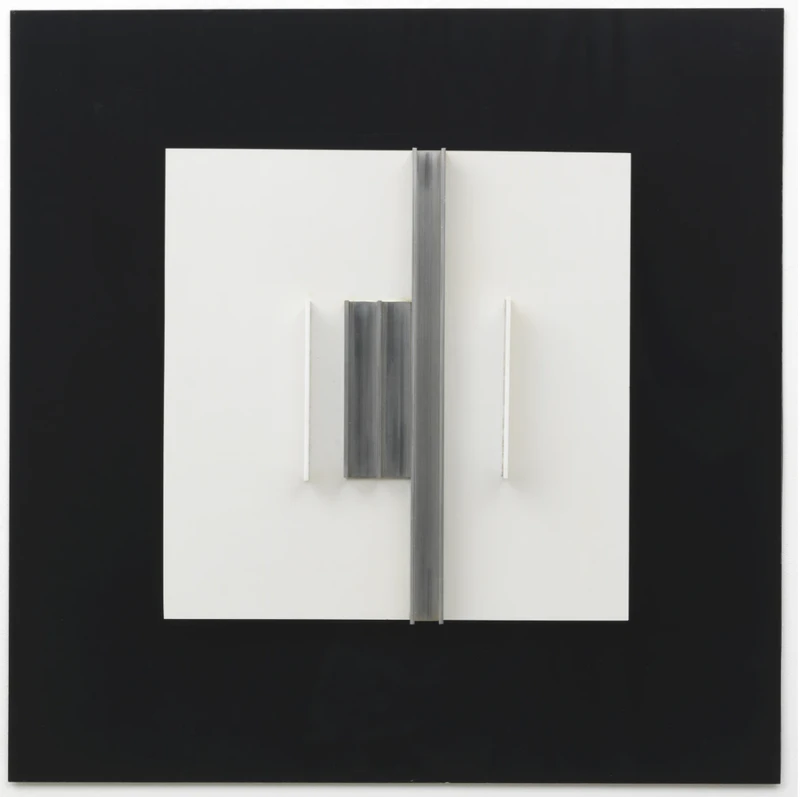Anthony Hill


b. 1930, United Kingdom
d. 2020
Anthony Hill was a seminal figure in British art. He was a principal theorist of the constructionists, a group of established artists who had turned towards abstraction, centred around Victor Pasmore. By the mid-1950s he had rejected painting for relief construction. Embracing Duchamp’s idea of the readymade, Hill used industrial materials such as copper, aluminium and perspex to propose a radical view of structure in art. He participated in the group exhibition This is Tomorrow at the Whitechapel Gallery, London, in 1956. In his first solo exhibition, at the Institute of Contemporary Art in January 1958, he showed purely orthogonal relief constructions.
Hill described his work as ‘ordered sensation’. During the later 1950s his focus turned from geometrical abstraction to the more qualitative area of topology, the study of one thing in relation to another. Parallel to his art, his inquiries took him into the field of mathematics. In 1957 he began work on what is now known as Hill’s Conjecture, formulated in a 1963 paper co-authored with the eminent mathematician Frank Harary. Hill’s investigations in topology permeated works and series in which the mathematical content is at times derived from his own work in the field and at others a purely intuitive study on themes of graph theory, the partitioning of numbers and symmetry. Common to all the works is his fascination with structure.
At the same time Hill was a prolific writer on art and its relations with science. The influential anthology DATA: Directions in Art, Theory and Aesthetics that he edited in 1968 centred on three themes: ‘the future of plastic art, the relations of art and science, and the ideal of synthesis.’ Its stellar cast included the topologist L.E.J. Brouwer, the quantum physicist David Bohm, the visionary urbanist Yona Friedman and the situationist Constant Nieuwenhuys. Hill’s own contribution was a startlingly original analysis of the work of Piet Mondrian from a topological viewpoint.
The last part of Hill’s career was largely lost to depression. This accounts in part for why he is in the strange position of being both deeply admired and yet not as widely acknowledged as the importance of his work would suggest. His art was radical and uncompromising from the beginning, and he held to his beliefs throughout the waves of fashion and acceptance. To interpret his constructed reliefs solely in terms of their apparent ‘mathematical’ content is to overlook their intensely poetic, intuitive nature.
Hill died in 2020. He was a unique and significant figure in British art. A catalogue raisonné and an extended monograph are in preparation, as well as a collection of his writings and interviews. Hill’s Conjecture is still an open problem and the subject of intense study among mathematicians worldwide. His archive, including extensive correspondence with Duchamp, Georges Vantongerloo, Charles Biederman, Brouwer and Pasmore, among many others, is destined for Tate, where it will join the 14 works by Hill, including several of his most significant constructions, in the permanent collection. Annely Juda Fine Art will hold an exhibition of Hill’s work in 2023.